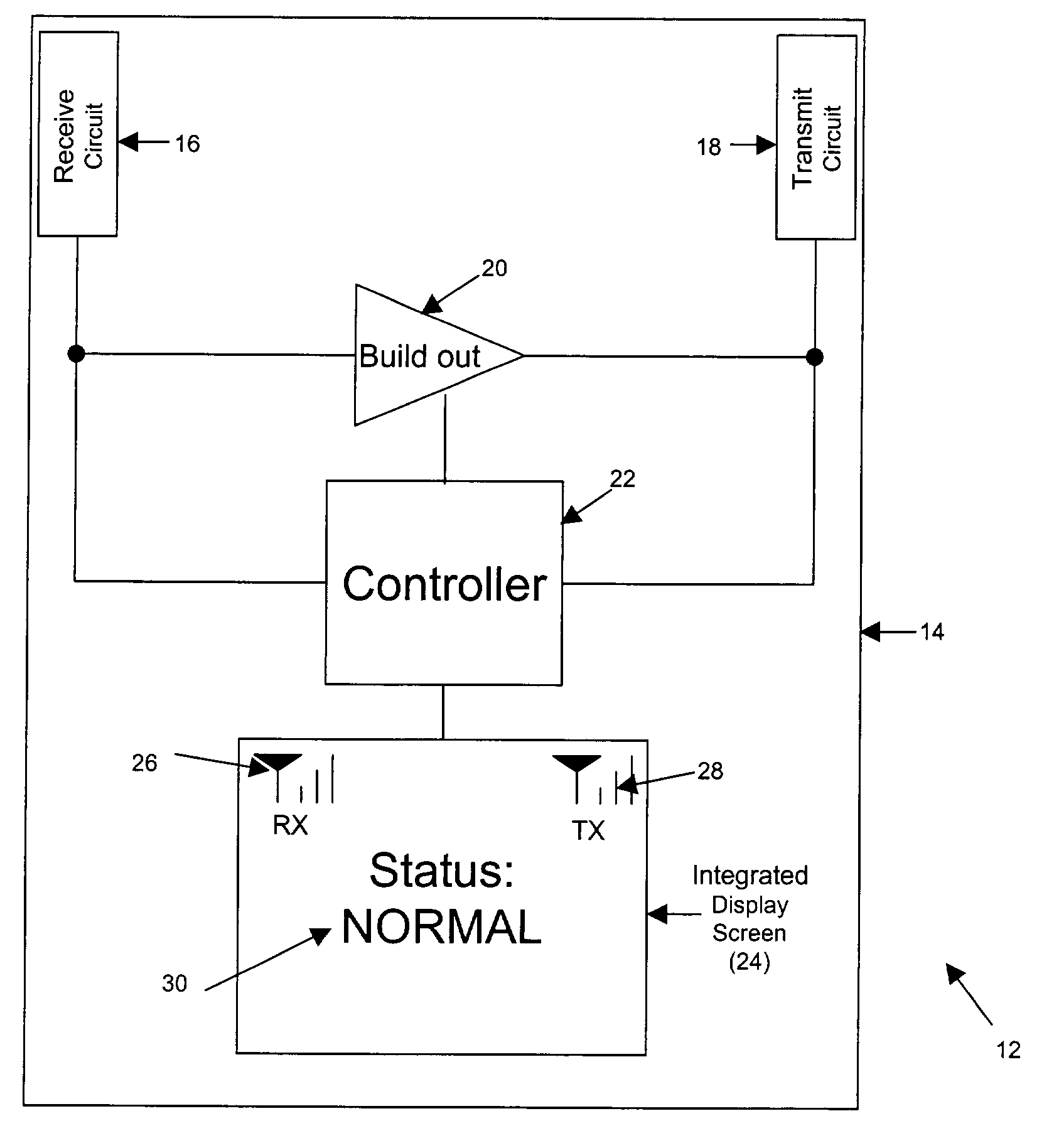Method and system for decreasing noise from wireless repeaters
a wireless repeater and noise reduction technology, applied in the field of wireless communication, can solve the problems of attenuating or otherwise degrading the signal passing over the air interface, cellular wireless communications can suffer from varying levels of signal degradation, and the problem can be even more acute, so as to improve the quality of wireless signal in buildings and elsewher
- Summary
- Abstract
- Description
- Claims
- Application Information
AI Technical Summary
Benefits of technology
Problems solved by technology
Method used
Image
Examples
Embodiment Construction
[0036]Referring to the drawings, FIG. 1 is a simplified block diagram illustrating components of a wireless signal repeater 12 made in accordance with an exemplary embodiment of the invention. As shown in FIG. 1, repeater 12 preferably has an outer housing or case 14 in or on which various components are located. Illustrated within housing 14 are a receive circuit 16, a transmit circuit 18, a build-out circuit 20, a controller 22, and a display screen 24. In the arrangement shown, receive circuit 16 is coupled with an input of build-out circuit 20 and with controller 22, and transmit circuit 18 is coupled with an output of build-out circuit 20 and with controller 22. In addition, controller 22 is coupled with display screen 24.
[0037]Each of these components can take various forms. Therefore, particular descriptions of these components in this specification should be viewed as examples only. Further, the arrangement and functions of these components can vary, additional components co...
PUM
 Login to View More
Login to View More Abstract
Description
Claims
Application Information
 Login to View More
Login to View More - R&D
- Intellectual Property
- Life Sciences
- Materials
- Tech Scout
- Unparalleled Data Quality
- Higher Quality Content
- 60% Fewer Hallucinations
Browse by: Latest US Patents, China's latest patents, Technical Efficacy Thesaurus, Application Domain, Technology Topic, Popular Technical Reports.
© 2025 PatSnap. All rights reserved.Legal|Privacy policy|Modern Slavery Act Transparency Statement|Sitemap|About US| Contact US: help@patsnap.com



